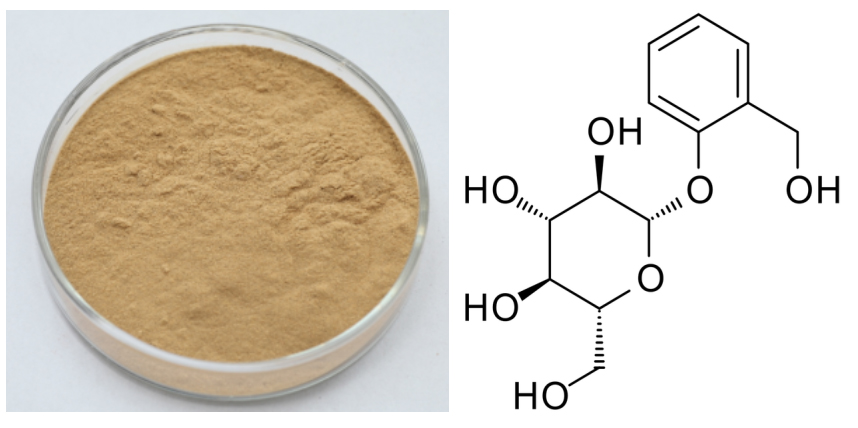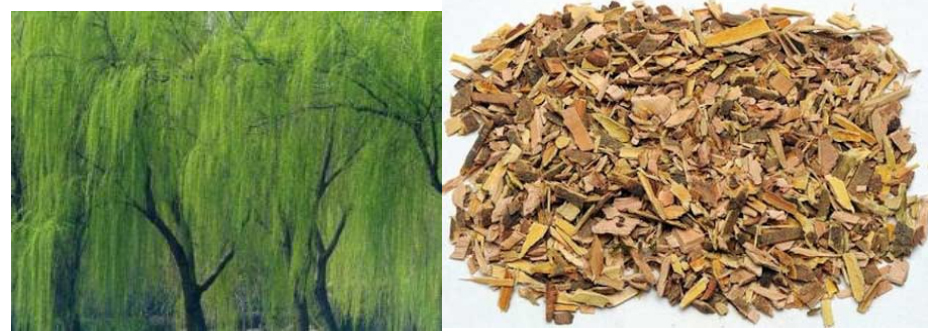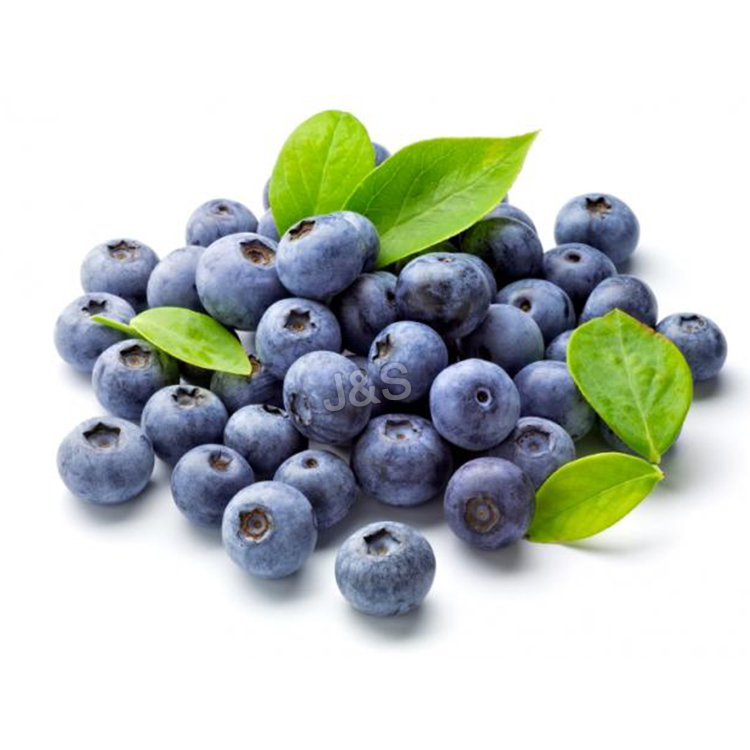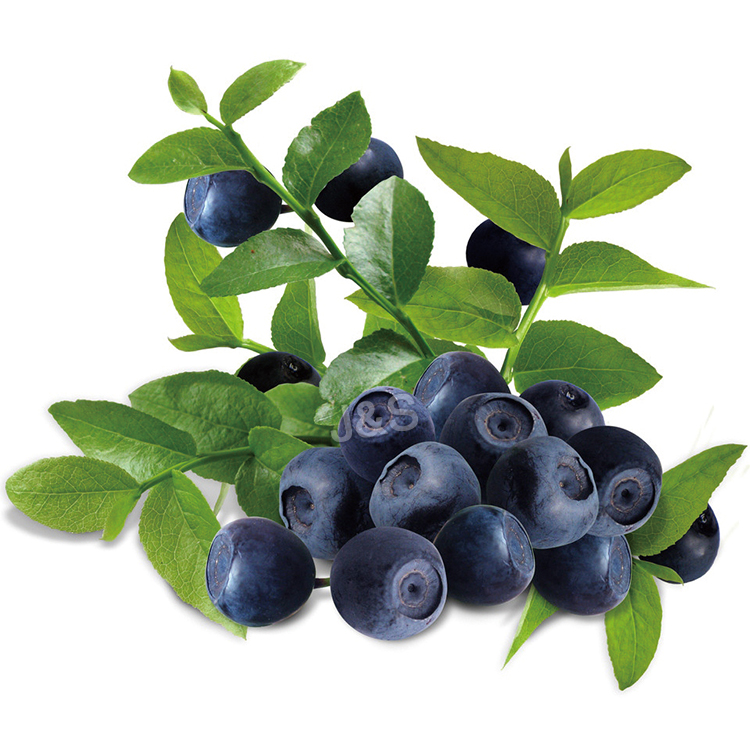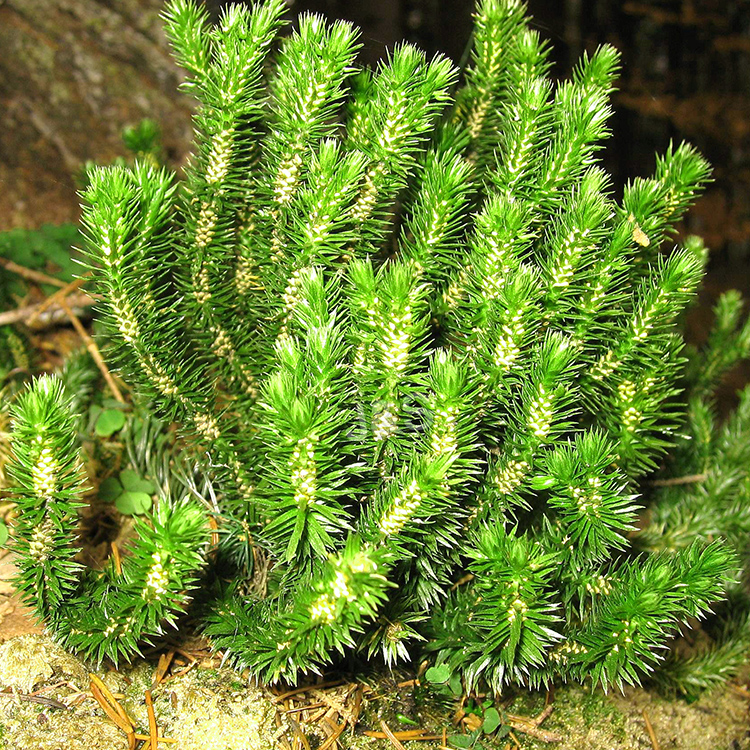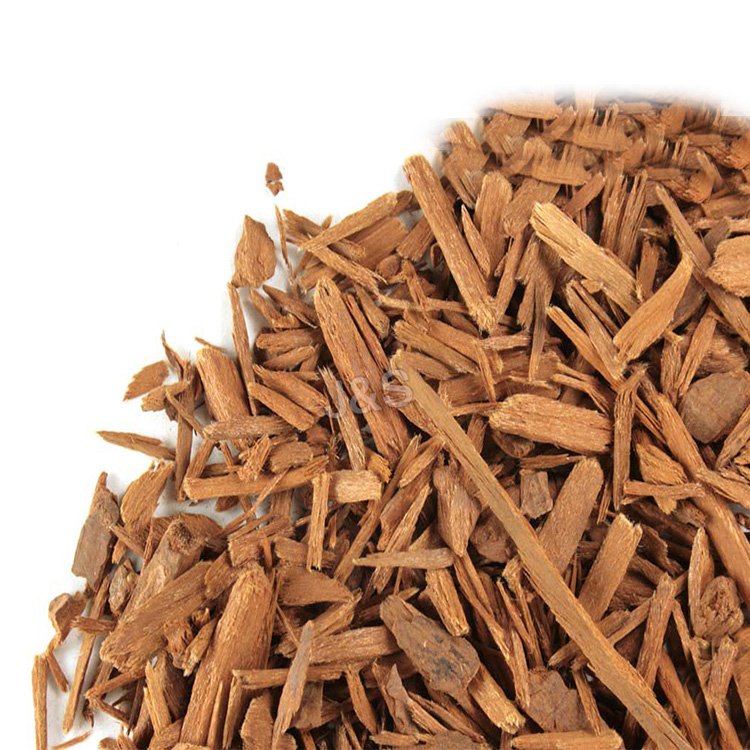Factory wholesale price for White Willow Bark Extract in Zimbabwe
Factory wholesale price for White Willow Bark Extract in Zimbabwe Detail:
[Latin Name] Salix alba L.
[Plant Source] from China
[Specifications] Salicin 15-98%
[Appearance] Yellow Brown to White powder
Plant Part Used: Bark
[Particle size] 80 Mesh
[Loss on drying] ≤5.0%
[Heavy Metal] ≤10PPM
[Storage] Store in cool & dry area, keep away from the direct light and heat.
[Shelf life] 24 Months
[Package] Packed in paper-drums and two plastic-bags inside.
[Net weight] 25kgs/drum
Brief Introduction
Salicin is a naturally occurring compound found in the bark of several species of trees, primarily North American in origin, that are from the willow, poplar, and aspen families. White willow, from whose Latin name, Salix alba, the term salicin is derived, is the most well known source of this compound, but it is found in a number of other trees, shrubs, and herbaceous plants as well being synthesized commercially. It is a member of the glucoside family of chemicals and is used as an analgesic and antipyretic. Salicin is used as a precursor for the synthesis of salicylic acid and acetylsalicylic acid, commonly known as aspirin.
A colorless, crystalline solid in its pure form, salicin has the chemical formula C13H18O7. Part of its chemical structure is equivalent to the sugar glucose, meaning it is classified as a glucoside. It is soluble, but not strongly so, in water and alcolhol. Salicin has a bitter taste and is a natural analgesic and antipyretic, or fever reducer. In large quantities, it can be toxic, and overdoses may lead to liver and kidney damage. In its raw form, it may be mildly irritating to skin, respiratory organs, and eyes.
Function
1. Salicin is used to ease pain and reduce inflammation.
2. Relieve acute and chronic pain, including headache, back and neck pain, muscle aches, and menstrual cramps; Control arthritis discomforts.
3. Relieve acute and chronic pain.
4. It has the same effect on the body as aspirin without any of the side effects.
5. It is an anti-inflammatory, a fever reducer, an analgesic, an anti-rheumatic, and an astringent. Specifically, it helps to relieve headaches.
Application
1.Anti-inflammatory, anti-rheumatic,
2.Reduce a fever,
3.Use as an analgesic and astringent,
4.Relieve headache,
5.Ease pain caused by rheumatism, arthritis, and carpal tunnel syndrome.
Product detail pictures:
Related Product Guide:
We are also specializing in improving the things management and QC method in order that we could retain terrific edge inside the fiercely-competitive small business for Factory wholesale price for White Willow Bark Extract in Zimbabwe , The product will supply to all over the world, such as: Islamabad, Saudi Arabia, Russia, Establish long term and win-win business relationships with all our customers, share the success and enjoy the happiness of spreading our products to the world together. Trust us and you will gain more. Please feel free to contact us for more information, we assure you of our best attention at all times.
Developed and produced by https://www.MechanismsinMedicine.com
Animation Description: This animation starts with the explanation of bacterial cell wall synthesis, the process targeted by ß-Lactams.
Structurally, most bacteria consist of a cell membrane surrounded by a cell wall and, for some bacteria, an additional outer layer. Internal to the cell membrane is the cytoplasm which contains ribosomes, a nuclear region and in some cases granules and/or vesicles. Depending on the bacterial species, a number of different external structures may be found such as a capsule, flagella and pili.
In gram negative bacteria, the gap between the cell membrane and the cell wall is known as the periplasmic space. Most gram positive bacteria do not possess a periplasmic space but have only periplasm where metabolic digestion occurs and new cell peptidoglycan is attached. Peptidoglycan, the most important component of the cell wall, is a polymer made of N-acetyl muramic acid alternating with N-acetyl glucosamine which are cross-linked by chains of four amino acids. The function of the bacterial cell wall is to maintain the characteristic shape of the organism and to prevent the bacterium from bursting when fluid flows into the organism by osmosis.
Synthesis of peptidoglycan and ultimately the bacterial cell wall occurs in a number of stages. One of the first stages is the addition of 5 amino acids to N-acetyl muramic acid. Next, N-acetyl glucosamine is added to the N-acetyl muramic acid to form a precursor of peptidoglycan. This peptidoglycan precursor is then transported across the cell membrane to a cell wall acceptor in the periplasm.
Once in the periplasm, the peptidoglycan precursors bind to cell wall acceptors, and undergo extensive crosslinking. Two major enzymes are involved in crosslinking: transpeptidase and D-alanyl carboxypeptidase. These enzymes are also known as penicillin binding proteins because of their ability to bind penicillins and cephalosporins.
Eventually, several layers of peptidoglycan are formed all of which are crosslinked to create the cell wall. Gram positive bacteria have many more layers than gram negative bacteria and thus have a much thicker cell wall.
Beta-lactam antibiotics include all penicillins and cephalosporins that contain a chemical structure called a beta-lactam ring. This structure is capable of binding to the enzymes that cross-link peptidoglycans.
Beta-lactams interfere with cross-linking by binding to transpeptidase and D-alanyl carboxypeptidase enzymes, thus preventing bacterial cell wall synthesis.
By inhibiting cell wall synthesis, the bacterial cell is damaged. Gram positive bacteria have a high internal osmotic pressure. Without a normal, rigid cell wall, these cells burst when subjected to the low osmotic pressure of their surrounding environment. As well, the antibiotic-penicillin binding protein complex stimulates the release of autolysins that are capable of digesting the existing cell wall. Beta-lactam antibiotics are therefore considered bactericidal agents.
Bacterial resistance to beta-lactam antibiotics may be acquired by several routes. One of the most important mechanisms is through a process known as transformation. During transformation, chromosomal genes are transferred from one bacterium to another.
When a bacterium containing a resistance gene dies, naked DNA is released into the surrounding environment. If a bacterium of sufficient similarity to the dead one is in the vicinity, it will be able to uptake the naked DNA containing the resistance gene.
Once inside the bacterium, the resistance gene may be transferred from the naked DNA to the chromosome of the host bacteria by a process known as homologous transformation. Over time, the bacterium may acquire enough of these resistance genes to result in a remodelling of the segment of the host DNA.
If this remodelled DNA segment codes for cross-linking enzymes (i.e. penicillin binding proteins), the result is the production of altered penicillin binding proteins.
These altered penicillin binding proteins can still cross-link the peptidoglycan layers of the cell wall but have a reduced affinity for beta-lactam antibiotics thus rendering the bacterium resistant to the effects of penicillin and other beta-lactam agents. This transfer process has resulted in penicillin-resistant S. pneumoniae through the acquisition of genes from other naturally occurring penicillin-resistant Streptococcus species.
A second important mechanism by which bacteria become resistant to beta-lactam antibiotics is by the production of enzymes capable of inactivating or modifying the drug before it has a chance to exert its effect on the bacteria.
View animation to read more.
Synthesis of Polysaccharides
This company has the idea of "better quality, lower processing costs, prices are more reasonable", so they have competitive product quality and price, that's the main reason we chose to cooperate.
